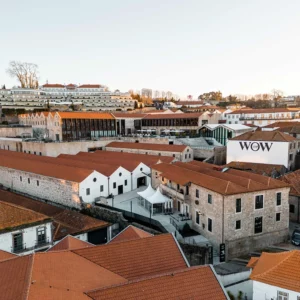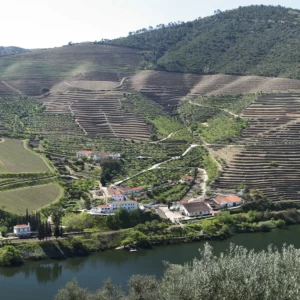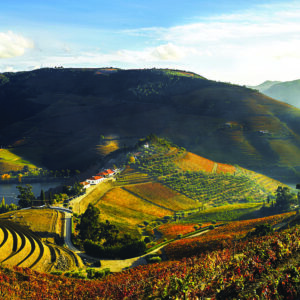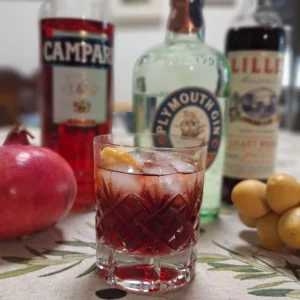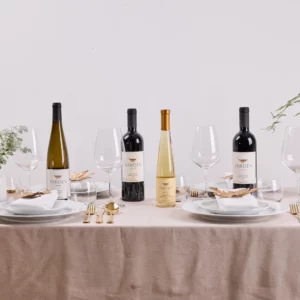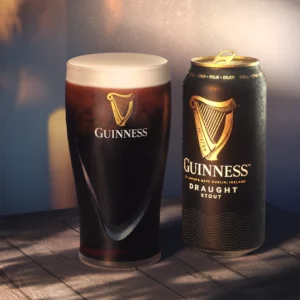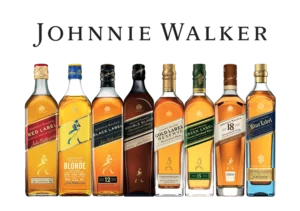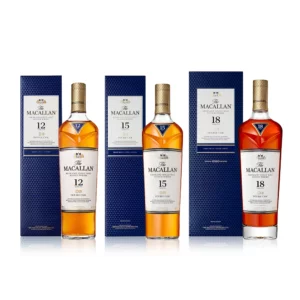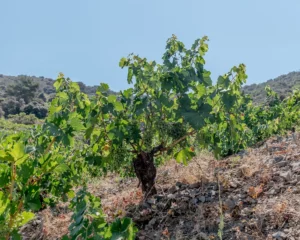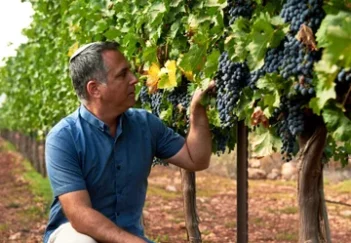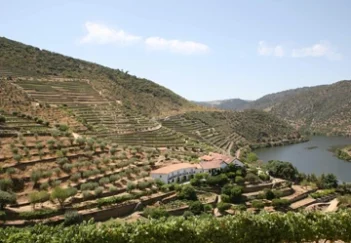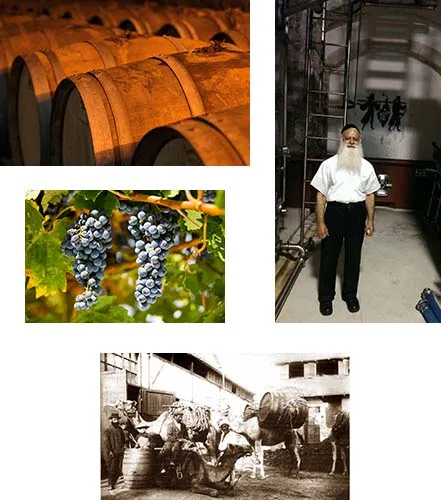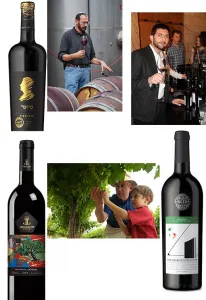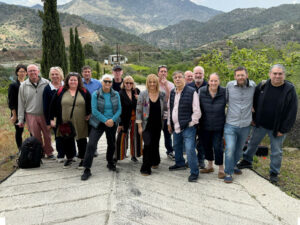Wine is a unique product, representing both Judaism and Eretz Israel like nothing else and its relevance spans our long history. Think how important vines, vineyards and wine were in Biblical times and what a great ambassador of modern Israel wine is today.
From the time Noah planted the first vineyard, wine has been a symbol of both Israel and Judaism, and this has spanned the ages. When the Biblical spies wanted to show Moses that the Promised Land was a land of milk and honey, they chose to show it with a large bunch of grapes.
Wine was so important to King David that he had separate officials to look after his vineyards and cellar. Maybe these were the first viticulturist and sommelier
Isaiah knew what it was all about. His remarkable Song of a Vineyard shows how much they understood about winegrowing. Maybe the cup bearer in the Joseph story was the first sommelier, but the first Jewish sommelier was Nehemiah, who was the cupbearer to the King of Persia. He was sent back to rebuild Jerusalem but he also revived Judean winemaking.
Rashi, aka Rabbi Shlomo Itzaki, was a winemaker. Perhaps the most famous Jewish winemaker until the Golan Heights Winery’s Victor Schoenfeld! For me he symbolized the connection Jews would have with production, distribution or sales of alcoholic beverages throughout the second millennium.
Maimonides was the first Jewish wine connoisseur. He insisted wine should be red, not diluted with water, or sweetened with sugar and with no off tastes or aromas. And so it goes on. Wine has been a constant thread through our history.
When we arrive at the 19th century, we find the production of kosher wine was not a business but a domestic industry. Families made their own kosher wine at home. Initially it was just for nearest of kin, maybe for friends or even for a small community.
Wine in Eastern Europe was at its most simple. It was made at home in a bucket or bath tub using raisins, water and with spices added. In America, they made wine with grapes, but the simplicity and the bucket were the same. Certainly the wine tasted better than the raisin wine from the old country.
In Ottoman Israel and North Africa, they used local table grape varieties. The earliest wineries were tiny, domestic affairs which would make some of our current boutique wineries look big. We remember two of the many from Jerusalem, the Shor family and Teperberg, simply because they had staying power. They are still around.
Wine was then not sold in bottles but in casks. There were no bottles with labels on. A bottle was something used to bring a wine from the cask to the table.
There were no brands, no kashrut certificates and no Rabbinical supervision. You bought from someone you knew, or drank your own homemade wine. Contrast the kosher winemaker with the shochet (ritual slaughterer). The shochet needed animals to slaughter and a place to do it. He would need intensive training and an infrastructure to check what was being done was correct. So a regulated format existed, but kosher wine was left in the home.
The founding of the Concord grape was significant. It was disease free and cold resistant and produced sweet jammy fruit with a foxy or musky smell that people liked. It was cheap and local. It became popular primarily for the production of jams and grape juice, but it was adopted by East Coast Jews for wine. As it rarely ripened in New York State, the wines were too sour and sugar was added to make them palatable.
One should not spoil a good story by the truth, but there were other reasons why the wine ended sweet. Firstly the technology was such that fermentations would rarely run to the end producing dry wines. They would get stuck leaving a residual sweetness. Secondly, sugar was usually added to keep the enemies of wine at bay. It was a first class preservative.
Finally as luck would have it, most drinkers drank sweet wines as a matter of choice. Being Jewish had nothing to do with it. Over the years the laws of evolution had encouraged the eating of sweet things. The caveman learnt to look for sweet berries which were tasty and gave calories and energy, whereas if they were sour, it was a warning and they were avoided.
The sweet addiction continues with some people today, but in the 19th century, most people drank sweet wines through choice. The popular wines included Port, Madeira, Sherry and Sauternes. Even Champagne was famous until quite late on only as a sweet sparkling wine.
It also should not be forgotten that up to the 1960’s, most wine even in the brave new world of Australia and America was sweet. The wines would have been muscat types or cheap versions of fortified wines.
The first Kosher winery in the United States belonged to a Mr. Dreyfuss in California but Schapiro was the iconic New York winery founded in 1899. It was the first winery to put Concord to the fore as the new kosher wine grape. Their wine was advertised as “so thick, you could cut it with a knife.”
Then Carmel Wine Co. arrived in New York in 1898 urging: “Support the Jewish Colonies” and “Drink the only genuine Palestine wines”. Interesting how the language has changed over the years! Shapiro and Carmel were the first kosher wines that became national and international brands respectively.
Astonishingly, the first supervision of kosher wine in the United States was not until 1925 and prosecutions took place when there was fraud.
Then the big brands came into play, flaunting Concord of course. Mogen Dovid was developed in Chicago, “wine your grandmother would like.” Monarch Wines from Brokklyn used a brand famous & successful in the Jewish food world, Manischewitz. Old timers may remember Sammy Davis crooning “Man O Manischewitz”. These became massive wine brands which extended way past the Jewish communities. Today Manischewitz is owned by Constellation Brands, Mogen Dovid by The Wine Group, two of the largest wine companies in the world.
Then Kedem was formed, a winery owned by the Herzog family. During World War II, the Nazis seized their Herzog Winery in Czeckoslovakia, but having survived that, the family then had to flee the communists.
The American market was dominated by three massive brands: Manischewitz, Kedem, and Mogen Dovid and Israel was dominated by Carmel. Behind these brands, a new kosher wine industry was formed talking wines from the bucket to the tank, from the home to the winery. It was a new Jewish wine world. I call it the Concord revolution. The kosher wine industry grew to be big business.
In the winemaking Sephardi world, symbolized by Morocco and later France, the Jewish community drank dry wines, because that was what was being drunk around them. However, in the Ashkenazi world, kosher wine was sweet and nostalgic.
In the late 20th century, Carmel Winery and Royal Wine (parent company of Kedem) started to produce dry wines and led a trend to dry kosher wines in America and Israel respectively. At the same time they were pushed by new small pioneering wineries like Hagafen in Californian and the Golan Heights Winery seeking absolute quality while following kosher guidelines.
The new all-embracing variety was the Cabernet Sauvignon. The same Cabernet that made Bordeaux great was transplanted to every wine producing country, also arrived in kosher wines. Suddenly kosher wine was being made with the same grapes as the finest wines, by winemakers who studied at the leading wine schools, using all the latest technology and the most modern equipment. Concord helped formalize the industry and the kosher Cabernet revolution brought kosher wines to new levels of quality.
When Yarden wines won major trophies in European competitions in the 1980’sand Herzog wines scored more than 90 points in the American wine magazines in the 1990’s, kosher wine had jumped a chasm of quality into the modern wine world. True recognition at the highest level would arrive at the beginning of the 2000’s. The kosher wine consumer was now able to taste and schmooze about wine like everyone else. For the first time the long history of Jewish winemaking was matched by the quality of its wines.


